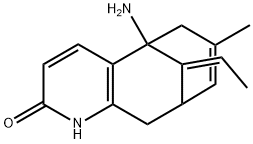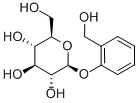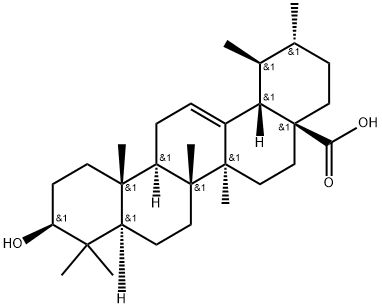(±)-HuperzineAsolution , 10mMinDMSO , 120786-18-7
Synonym(s):
(±)-Selagine
CAS NO.:120786-18-7
Empirical Formula: C15H18N2O
Molecular Weight: 242.32
MDL number: MFCD00171439
EINECS: 200-001-8
| Pack Size | Price | Stock | Quantity |
| 1ml | RMB465.60 | In Stock |
|
| others | Enquire |
PRODUCT Properties
| Boiling point: | 505.0±50.0 °C(Predicted) |
| Density | 1.20±0.1 g/cm3(Predicted) |
| storage temp. | 2-8°C |
| solubility | DMSO : ≥ 50 mg/mL (206.34 mM) |
| pka | 12.25±0.60(Predicted) |
| form | solid |
| color | White or off-white |
| InChI | InChI=1S/C15H18N2O/c1-3-11-10-6-9(2)8-15(11,16)12-4-5-14(18)17-13(12)7-10/h3-6,10H,7-8,16H2,1-2H3,(H,17,18)/b11-3+ |
| InChIKey | ZRJBHWIHUMBLCN-QDEBKDIKSA-N |
| SMILES | C12CC3/C(=C\C)/C(N)(C=1C=CC(=O)N2)CC(C)=C3 |
| CAS DataBase Reference | 120786-18-7 |
Description and Uses
Huperzine A is an alkaloid extract derived from the Chinese club moss Huperzia serrata. It is an acetylcholinesterase inhibitor. This means it helps promote higher levels of acetylcholine in the brain. Higher levels of acetylcholine support ones ability to perform cognitive tasks such as learning new things, memorizing information, and focusing at the task at hand. Huperzine A is considered to be a nootropic supplement because it supports cognitive function. It is considered a focus and memory nootropic similar to alpha gpc, bacopa, phosphatidylcholine, cdp choline, sulbutiamine, and uridine. It is also considered a brain booster as it is used for brain health and support.
Huperzine A for many years has been widely used in traditional Chinese medicine to enhance memory and to treat fever and inflammation. In the United States it is commercially available as a food supplement, but has not been approved by the FDA as a treatment for AD or other cognition disorders.
Huperzine A is used for dementia in Alzheimer's disease and for muscle weakness in myasthenia gravis. In Alzheimer's disease, Huperzine A leads to significant improvements in memory and cognitive and behavioral function.
Safety
| Symbol(GHS) |  GHS06 |
| Signal word | Danger |
| Hazard statements | H301+H311+H331-H315-H319-H335 |
| Precautionary statements | P261-P280-P301+P310-P302+P352+P312-P304+P340+P311-P305+P351+P338 |
| Hazard Codes | T |
| Risk Statements | 23/24/25-36/37/38 |
| Safety Statements | 26-36/37/39-45 |
| RIDADR | UN 1544 6.1/PG 2 |
| WGK Germany | 3 |
| RTECS | PB9185700 |



